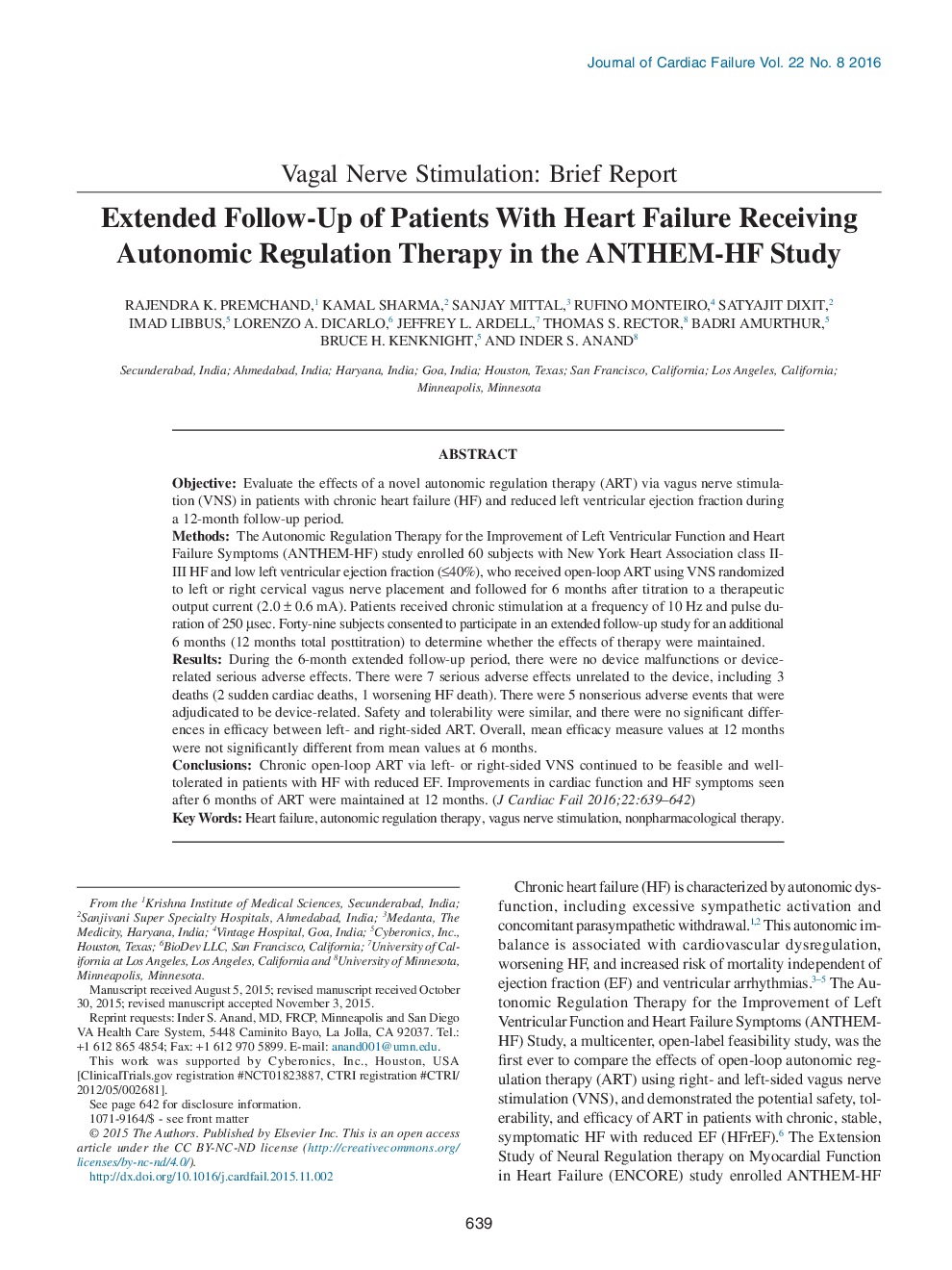| Article ID | Journal | Published Year | Pages | File Type |
|---|---|---|---|---|
| 5983662 | Journal of Cardiac Failure | 2016 | 4 Pages |
ObjectiveEvaluate the effects of a novel autonomic regulation therapy (ART) via vagus nerve stimulation (VNS) in patients with chronic heart failure (HF) and reduced left ventricular ejection fraction during a 12-month follow-up period.MethodsThe Autonomic Regulation Therapy for the Improvement of Left Ventricular Function and Heart Failure Symptoms (ANTHEM-HF) study enrolled 60 subjects with New York Heart Association class II-III HF and low left ventricular ejection fraction (â¤40%), who received open-loop ART using VNS randomized to left or right cervical vagus nerve placement and followed for 6 months after titration to a therapeutic output current (2.0â±â0.6âmA). Patients received chronic stimulation at a frequency of 10âHz and pulse duration of 250âµsec. Forty-nine subjects consented to participate in an extended follow-up study for an additional 6 months (12 months total posttitration) to determine whether the effects of therapy were maintained.ResultsDuring the 6-month extended follow-up period, there were no device malfunctions or device-related serious adverse effects. There were 7 serious adverse effects unrelated to the device, including 3 deaths (2 sudden cardiac deaths, 1 worsening HF death). There were 5 nonserious adverse events that were adjudicated to be device-related. Safety and tolerability were similar, and there were no significant differences in efficacy between left- and right-sided ART. Overall, mean efficacy measure values at 12 months were not significantly different from mean values at 6 months.ConclusionsChronic open-loop ART via left- or right-sided VNS continued to be feasible and well-tolerated in patients with HF with reduced EF. Improvements in cardiac function and HF symptoms seen after 6 months of ART were maintained at 12 months.
